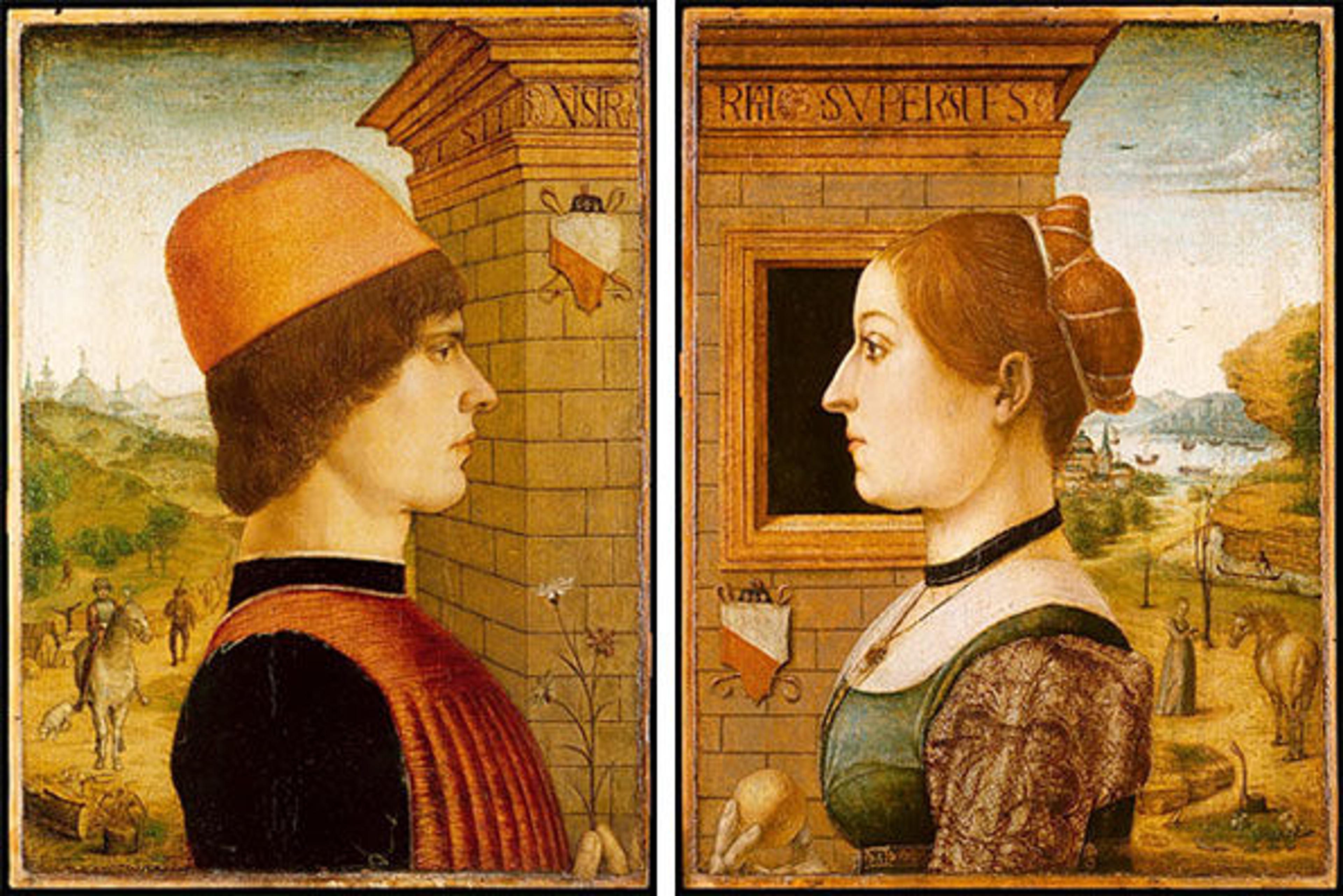
Attributed to the Maestro delle Storie del Pane (Italian [Emilian], active late 15th century). Portrait of a Man, possibly Matteo di Sebastiano di Bernardino Gozzadini (left) and Portrait of a Woman, possibly Ginevra d'Antonio Lupari Gozzadini (right), ca. 1485–95. The Metropolitan Museum of Art, New York, Robert Lehman Collection, 1975 (1975.1.95, 96)
«Art from the past holds clues to life in the past. By looking at a work of art's symbolism, colors, and materials, we can learn about the culture that produced it.» For example, the two portraits above are full of symbolism referring to virtues of an ideal marriage during the fifteenth century. The young woman's portrait contains symbols of chastity (the unicorn) and fertility (the rabbits), virtues that were important for a Renaissance woman to possess. After decoding the symbolism in these portraits, we can learn what was important to these people and how they wanted to be remembered.
We also can compare artwork, which provides different perspectives, and gives us a well-rounded way of looking at events, situations, and people. By analyzing artworks from the past and looking at their details, we can rewind time and experience what a time period different from our own was like.
Looking at art from the past contributes to who we are as people. By looking at what has been done before, we gather knowledge and inspiration that contribute to how we speak, feel, and view the world around us.
Related Links
Heilbrunn Timeline of Art History: Portrait of a Man, possibly Matteo di Sebastiano di Bernardino Gozzadini; and Portrait of a Woman, possibly Ginevra d'Antonio Lupari Gozzadini
Heilbrunn Timeline of Art History: "Paintings of Love and Marriage in the Italian Renaissance"
What do you think we can learn from looking at works of art from the past?
We welcome your responses to this question below.